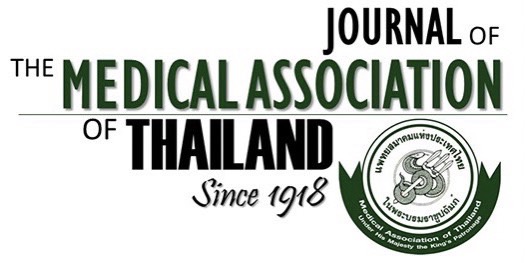Adverse Reactions of 300 MG Diethylcarbamazine, and in a Combination of 400 MG Albendazole, for a Mass Annual Single Dose Treatment, in Migrant Workers in Phang Nga Province
Pisit Yongyuth MD*, Surachart Koyadun MSc**, Nongnuch Jaturabundit BNr, BPH***, Wuttisal Jariyahuttakij MA*, Adisak Bhumiratana MSc****
Affiliation : * Thap Put Hospital, Phang Nga ** Office of Disease Prevention and Control 11 (Nakhon Si Thammarat), Department of Disease Control, Ministry of Public Health, Nakhon Si Thammarat *** Phang Nga Provincial Public Health Office, Phang Nga **** Department of Parasitology, Faculty of Public Health, Mahidol University, Bangkok
Background : Foreign migrant workers with work permits in Thailand are given once a year 300 mg diethyl-
carbamazine (DEC) for bancroftian filariasis, and 400 mg albendazole (ABZ) for helminthiasis. Treatment
effectiveness, tolerability, and safety of two treatment arms, DEC + ABZ and DEC alone, had never been fully
documented.
Objective : Evaluate the tolerability of the two treatment arms and analyze the effects of adverse reaction,
prevalence, and intensity of both common and uncommon adverse drug reactions (ADR) in relation to the
reaction time (2 hours = acute, > 2 to 24 hours = subacute, and > 24 to 72 hours = latent).
Materials and Methods : A hospital-based clinical study of on-hour-2 treatment with both treatment arms in 280
Myanmar male migrant volunteers (DEC + ABZ = 150, DEC = 130) was conducted in Phang Nga province,
southern Thailand. Of these, ADR evaluation at three reaction times was performed using antigenemic (WbAg+)
and non-antigenemic (WbAg-) volunteer groups (DEC + ABZ/WbAg+ = 14, DEC/WbAg+ = 12, DEC + ABZ/
WbAg- = 8, and DEC/WbAg- = 16).
Results : Both drug groups had similarly overall ADR prevalence [5.2% for DEC + ABZ and 5.1% for DEC (p
> 0.05)], as well as mean ADRacute scores (p > 0.05) on hour 2 post-treatment. The four groups had maximum
overall prevalence (10% to 40% for ADRsubacute). It was more likely to show no relationship between treatment
arms and WbAg (neither WbAg+ nor WbAg-) with adverse reaction intensity for ADRacute, ADRsubacute, or ADRlatent.
Three major specific ADR were fatigue, dizziness, and headache.
Conclusion : Adverse reaction prevalence and intensity were independent for WbAg and treatment arm. The
DEC + ABZ have no greater effects on ADR development as the DEC does. The common ADR after treatment
are not required for symptomatic treatment. The study confirms DEC + ABZ regime can be safe and not toxic
for use in mass treatment of those migrants in Thailand and, its value, in a mass annual single dose treatment,
is beneficial for the Global Alliance to Eliminate of Lymphatic Filariasis (GAELF).
Keywords : Diethylcarbamazine, Albendazole, Adverse drug reactions, Myanmar migrants



